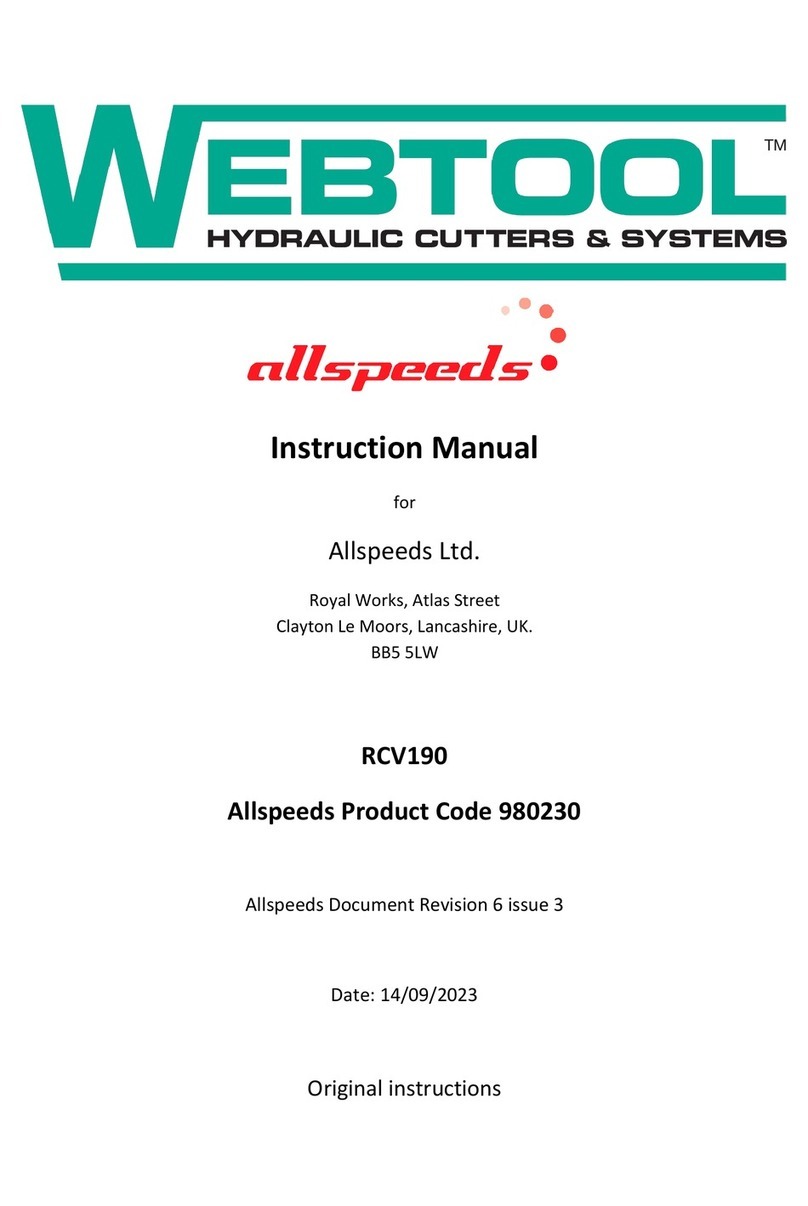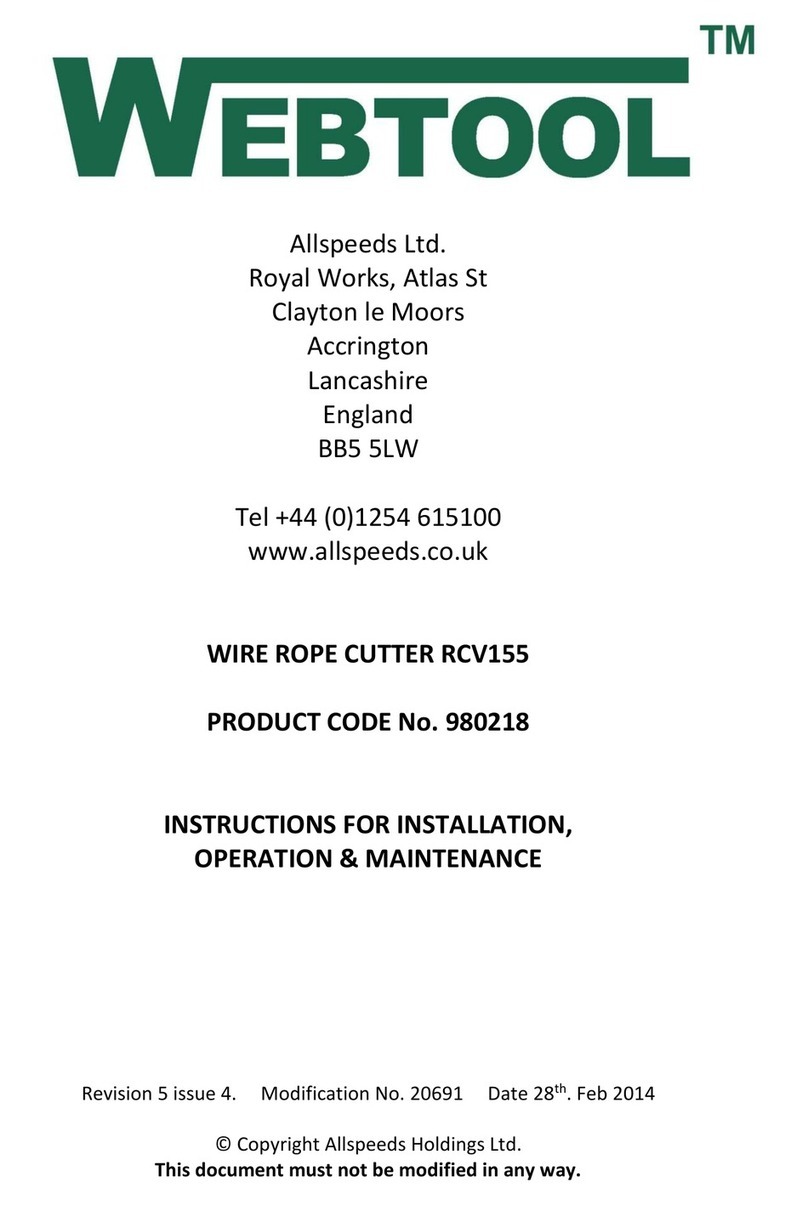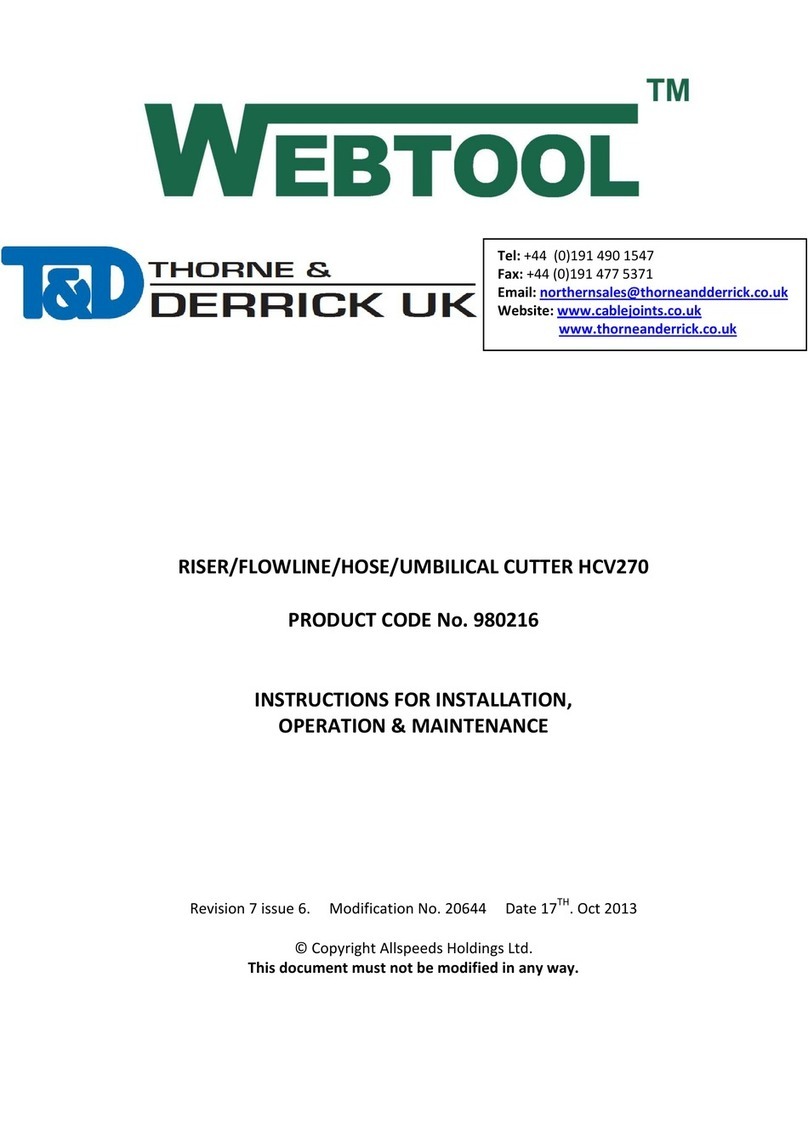Page 6of 17
pressure to the main input of the cylinder. This can be a maximum of 690 bar (10,000psi).
If the material to be cut is still not severed after multiple cycles and at a pressure of 690 bar,
retract the blade and then the anvil and return the tool to the surface for inspection of the
blade and anvil, replace if necessary.
IMPORTANT NOTE –ENSURE THAT THE BLADE IS FULLY RETRACTED AND THAT ALL PRESSURE
TO THE CUTTER IS RELIEVED AS IT IS RAISED TO THE SURFACE. FAILURE TO DO THIS CAN LEAD
TO A DANGEROUS BUILD UP OF PRESSURE IN THE CYLINDER.
5. AFTER USE
When the tool is retrieved from a marine enviroment, it should be hosed off with clean water,
allowed to drain and sprayed externally with a de-watering fluid. Before storage, inspect the
general condition of the tool. Particular attention should be paid to the anvil and blade. The
anvil should be clean and free from any damage or bruising on the outside diameter that would
prevent it from retracting properly, The blade edge should be smooth and free from any
serrations. Note that a slight ripple to the blade edge is acceptable and will not cause problems.
Any minor damage can be smoothed off with an oil stone if necessary.
IMPORTANT –DO NOT STORE THE TOOL WITH A COMPLETELY SEALED CYLINDER AS PRESSURE
MAY BUILD UP DUE TO TEMPERATURE CHANGES.
6. SERVICE
IMPORTANT –ENSURE THERE IS NO HYDRAULIC PRESSURE IN THE CYLINDER BEFORE
PERFORMING ANY SERVICE OR MAINTENANCE PROCEDURES ON THIS CUTTER
It is unlikely that service would be required on the hydraulic components of the tool under
normal circumstances, but a seal spares kit is available if required. The only parts that would
need intermittent replacement would be the anvil and blade, depending on the frequency of
use and materials being cut. These parts can be ordered up on the following spares reference
numbers, but in addition please quote the tool serial number.
HCV155 seal kit, cutter and auxiliaries Part Number 995285
Seal Kit auxiliary cylinder only Part Number 995122
Anvil Part Number SSC6489
Blade Part Number 705051c
Blade Retaining Pin Part Number 030636 2 off
We advise that any servicing should be carried out by an authorised distributor only.
If required, the tool can be returned to the manufacturer for servicing and testing.
If servicing is to be undertaken by the user, please see note on proof testing under
SAFETY (Section 1), and the following:-
All servicing operations should be carried out in a clean environment to prevent contamination
of the oil and mating components.
Care should be taken with all mating areas ie. threads and sealing faces, as any damage or
abrasive contamination could cause galling or seizing on re-assembly.































